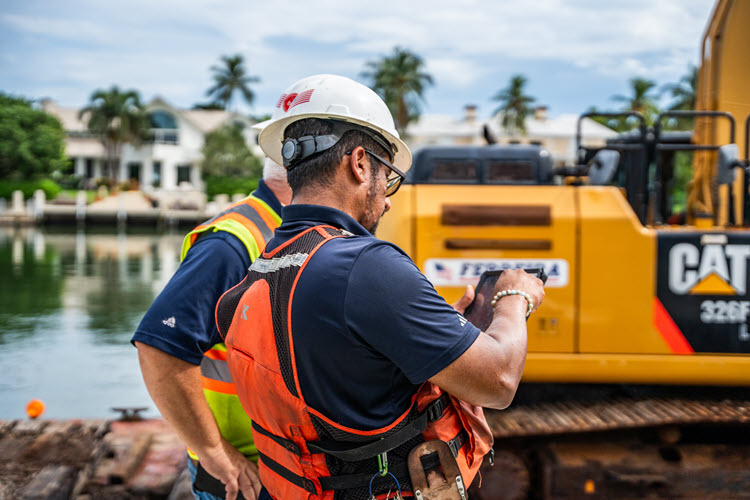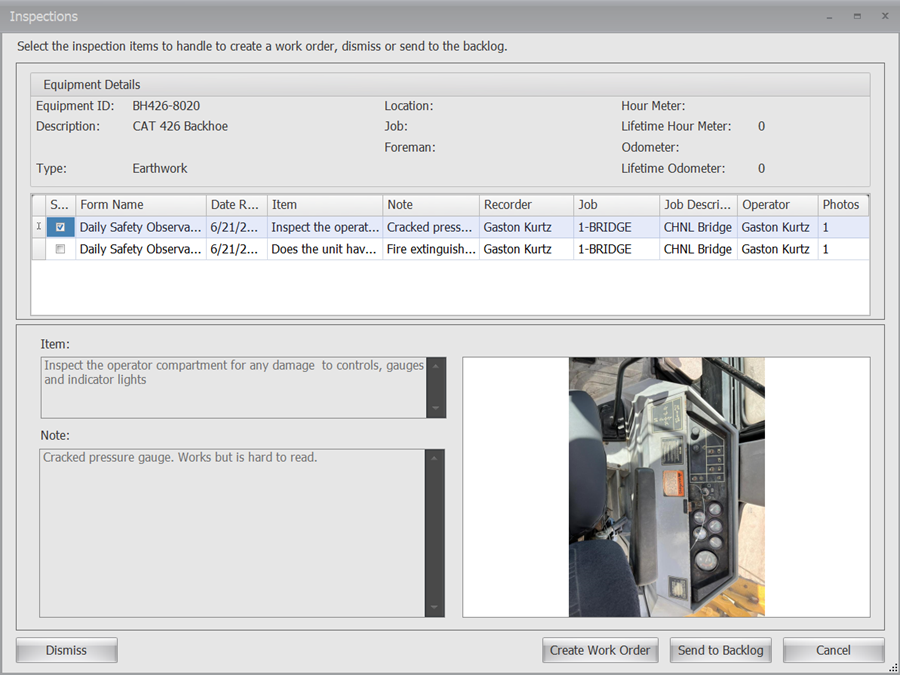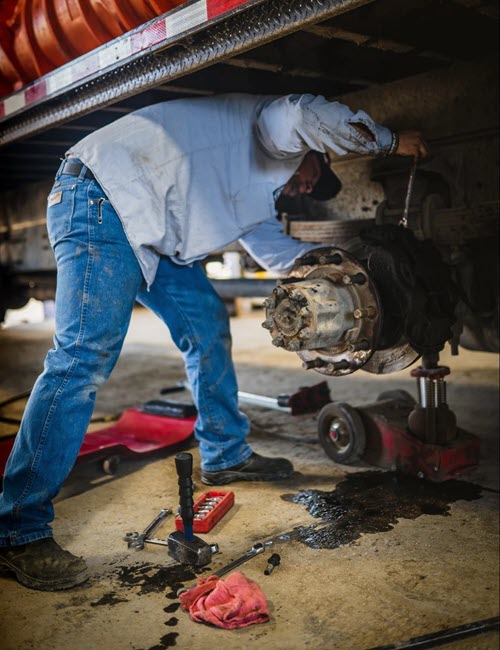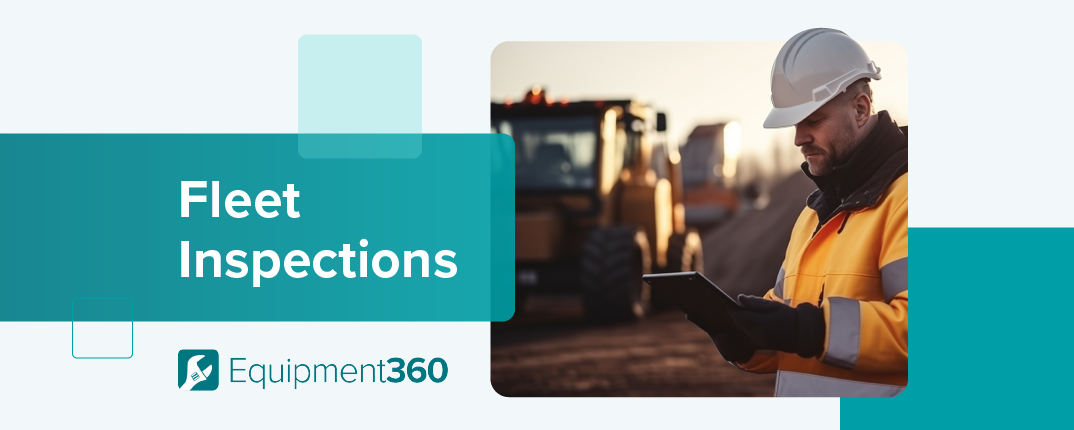You can usually tell how efficient a fleet is by its safety inspection program (if it even has one). Proper fleet inspections are often the most overlooked yet arguably the most crucial part of running a successful fleet operation.
Keeping your drivers safe and your vehicles healthy should be at the top of every fleet manager’s list. Conducting inspections not only lets them keep tabs on the day-to-day condition of their equipment but also reduces overall costs and helps you stay compliant during any surprise audits.
Few other ways inspections are a must:
Vehicle Lifespan: Regular inspections help identify early issues with an asset before they snowball into costly repairs — increasing the life of your vehicles.
Penalty Fines: Inspections help lower your driver’s/company’s liability. Don’t let roadside checkpoints eat into your profits.
Accidents: Negligence or improper inspections could run you a pretty penny and put your drivers at risk.
There’s no need to get bogged down with filing paperwork and storing inspection documents. Here’s a brief rundown of fleet inspections and, more importantly, how you can improve to stay prepared and ready year-round with fleet management software like Equipment360.
Understanding DOT Audits and How to Prepare for Them
First off, “What are DOT Audits?”
DOT audits are the official safety check-ins by the Department of Transportation to ensure compliance with the Federal Motor Carrier Safety Regulations (FMCSRs), Hazardous Materials Regulations (HMRs), and related record-keeping requirements. They are comprehensive — reviewing everything from insurance coverage to fleet maintenance and driver logbooks.
According to the Federal Motor Carrier Safety Administration (FMCSA), motor carriers must inspect, repair, maintain, and keep appropriate records for all vehicles to pass.

Audits could easily stand in the way of running a smooth fleet operation and sideline your business. If you have filed your fleet with the DOT in the last few months, you will automatically have a New Entrant Safety Audit. If this audit finds any area for improvement, you may have a second audit further down the line.
That said, even established fleets can attract the attention of the DOT if you’re not careful. Here are a few ways:
- Unsafe driving
- Expired licenses/certifications
- High-Accident rate
- Failed vehicle inspection
How Equipment360 Tracks Your Inspections and Keeps Your Fleet Up to Standard
Nothing slows down a pre-shift inspection like jotting down every minute detail on a paper checklist. Digitizing this process with Equipment360 makes for one high-powered fleet operation –- allowing you to document everything and automatically notify shop personnel of any failures that could harm your crew or assets.
With strict DOT regulations around pre-trip inspections, drivers must ensure everything is in working order and compliant for road use. Let’s say that during that inspection, if an item on your checklist fails to meet the standard, the DOT will then require a trail of documentation that includes the failed inspection item and (more importantly) the work order to fix that failed item.

Equipment360 works with HCSS Safety to neatly organize all your important documents in one place, streamlining your inspections and making them easily retrievable. There’s no need to lose your DOT status simply because of some misplaced files during an audit. Additionally, unlike with the old pen-and-paper route, your operators can see the real-time status of their inspection follow-up and understand where it is in the repair/correction process.
Customizable work order checklists also help mechanics become more efficient. Instead of having them ruffle through service manuals, Equipment360 offers a fully customizable checklist with every step needed for the required maintenance work order. This makes documentation even easier, as it clarifies to the mechanic what needs to be done.
Our fleet management software enables you to:
Ditch the clipboards and maintain accurate inspection documentation for DOT audits straight from your tablet or phone.
Set specific criteria for inspections based on your fleet’s needs.
Automate work orders so that the minute an inspection item is failed, your asset can begin maintenance.
Keep Your Fleet Safe, Healthy, & Compliant with Preventive Maintenance
Fleet inspections and preventive maintenance fall under the same umbrella — they’re both aimed at saving costs and prioritizing safety. Ultimately, they:
Identify Problems Early/Extend Vehicle Lifespan
Regular fleet inspections can catch small issues before they become major headaches. This might include premature wear and tear on your tires, brakes, or engine parts. Being proactive allows for longer shelf life for your assets.
Reduce Overall Downtime
Downtime is part of fleet operations. It’s inevitable when you’re trying to run smoothly and efficiently. However, breakdowns can and do happen — leaving you with unscheduled repairs and sluggish operations. Regular inspections allow you to stay on top of your fleet and minimize your downtime.

Data & Automation are What Separate a Good Fleet from a Powerful Fleet
Having eyes on your fleet means having the most accurate data to make the right decisions. Whether it’s tracking where your assets are or (more importantly) how they’re performing — it can mean the difference between passing and failing a DOT audit.
By combining Equipment360 and HCSS Telematics, you can not only track your fleet’s health with real-time data but can set up predetermined thresholds to trigger things like vehicle inspections, part replacements, and ongoing maintenance tasks. These types of automation in your fleet operations ensure optimal uptime and keep your equipment compliant for future audits.
More Ways Equipment360 Can Strengthen Your Fleet Inspections
Along with Equipments360’s work order checklists, you can also create your ‘failed item’ alerts straight from the HCSS Safety Inspection module onto the Equipment360 dashboard. This lets you carry over all the precious data from your forms, such as failed items and inspection notes, straight from the field.
Stay safe, document everything!
Speaking of inspection notes, Equipment360 allows you to streamline arguably the most important part of an inspection. Documentation and inspection notes are crucial to keeping your whole team organized and prepared. Equipment360 ensures your operators, mechanics, and managers can easily add follow-up inspection notes with photos — keeping everyone in the loop and all your equipment in check.
QR code forms in HCSS Forms make it even easier for operators to just open the camera, scan the QR code, and go directly to the inspection linked to that piece of equipment.
DOT Audit Coming Up? HCSS is Here to Keep You Prepared.
Always know how your fleet is performing. HCSS offers everything you need to document every oil change, inspection, and fuel check to keep you ahead of the game. To learn more about Equipment360, Telematics, or any of our fleet management products from our suite, book a demo and revolutionize how your fleet operates.



